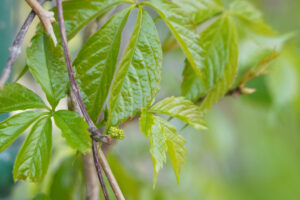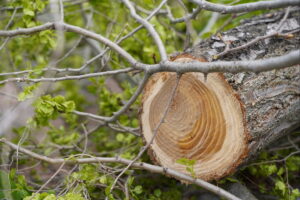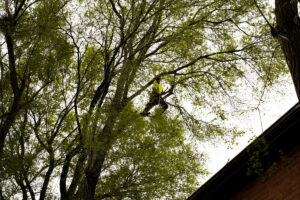Spring is the time in Ontario to work on your lawn and garden, and plant all the greenery that will turn your yard into a summer oasis. If you planted young trees during your spring gardening, you will want to ensure those saplings have the best chance at growing up to be strong and healthy trees. Read on for how to properly care for your young and newly planted trees this summer.
Start with Success
Choosing the right tree for your Ontario garden from the get-go will be your key to success. It is important to consider soil type, proximity to buildings, and your hardiness zone. A hardiness zone is an indicator of which trees, plants, and flowers are most likely to survive in specific geographic areas. Each area of North America has a ‘hardiness zone’, which indicates the average minimum temperature for the area. Southern Ontario has three different hardiness zones: 5b, 6a, and 6b. You can determine your specific zone with these maps. For our suggestion on the best trees to plant in Ontario, check out our guide on common tree types!
Know When to Prune
Conducting correct structural pruning when your trees are young puts them at an advantage as they grow. When you remove dead or damaged branches early, branches that are growing too closely together, which have the potential to interfere with each other, and remove lower limbs over the course of many years, you will decrease the chance of structural defects as your tree grows and increase the amount of light and air that can circulate through the tree. Be careful to not cause trunk damage, as wounding your tree can be detrimental rather than helpful. If you’re not sure where to start with pruning or how to conduct proper tree care, book one of our Tree Pruning Services to help you get started.
Drink Up this Summer
Summer drought is the number one killer of young trees in Ontario. Keeping your saplings well watered will be the key to happy and healthy trees. A deep thorough watering every other day is best to avoid weak surface roots and helps encourage deep rooting. If you notice curling leaves that develop brown tips, you’re likely underwatering. Trees require roughly 2 inches of water per week, and a light dose from a sprinkler won’t cut it. The soil around the tree should be kept moist but not saturated, as it is crucial to avoid overwatering.
If you notice the leaves on your trees are yellowish, or the soil surrounding the tree is extremely wet, it could be a sign that you’re overwatering. A tree that is overwatered is at a higher risk of developing rot and absorbing the amount of oxygen they need. Read our blog for even more details on the do’s and don’ts of watering.
Weed Your Heart Out
Weeds and grass will fight your young tree for soil nutrients, so keep the area around your new trees clear of other plants. When you bring out the lawn tools this summer, ensure you are extremely careful to not nick the bark of your young or mature trees, as this can cause long lasting damage to your tree. We suggest weeding by hand to ensure the safety of your young tree, but check out all of our tips here.
Keep your Trees Au Natural
Chemicals from pesticides can be extremely harsh on young tree roots, so we suggest going the natural route while your trees are in the first few years of their life. This may require more work on your part, but we think it’s worth it in the long run to protect your growing canopy! To keep your trees healthy without the use of pesticides this summer, use tree guards to prevent animal damage, and manually remove overgrowth from the base, as weeds can strangle growing tree trunks. For specific advice for your yard, we offer a Tree Care Consulting service to make sure your trees thrive.
Worth the Work
While planting and caring for young trees in the summer can be lots of work, it is worth it to have beautiful healthy trees on your property. Having healthy trees in your yard can increase shade during the summer, help regulate temperature, and can even increase the local wildlife habitat. If you’re looking for expert advice custom to your backyard or property, contact our team of certified arborists today.






